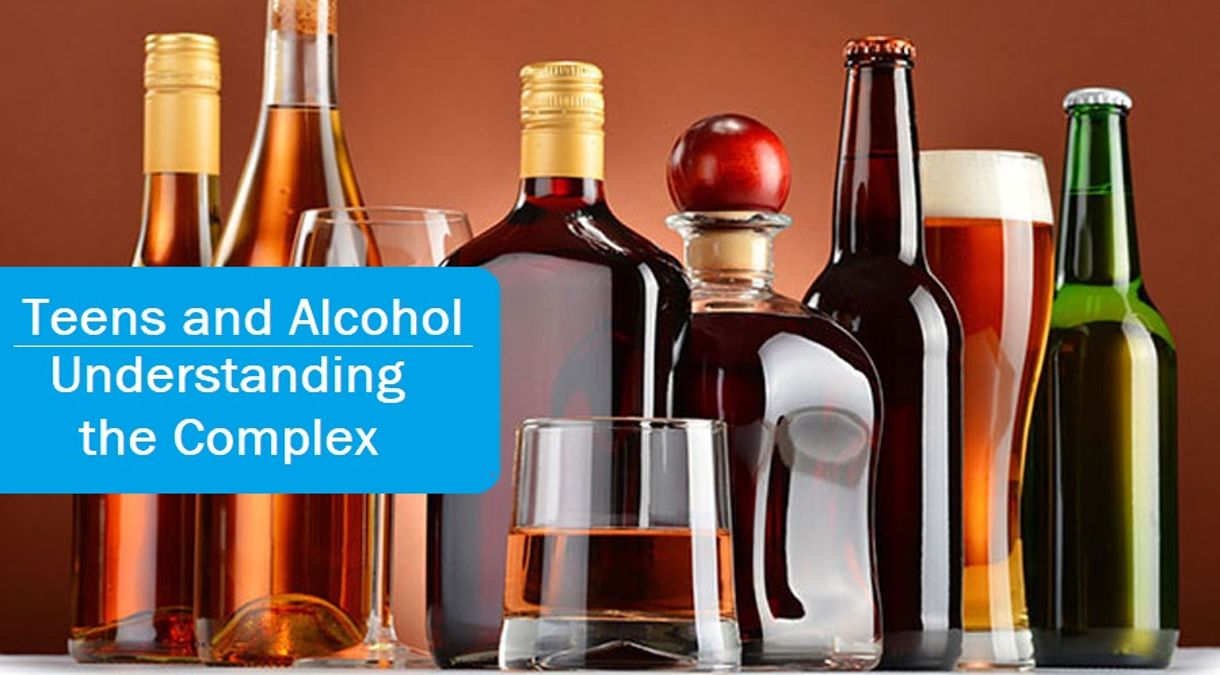Teens and Alcohol: Every parent is concerned about underage drinking. No matter the family’s money, status, or race, it may happen. The fact that underage drinking can begin before adolescence surprises a lot of parents.
It’s critical for parents to comprehend the causes behind their child’s alcohol experimentation. You should also be aware of how an addiction may develop and how to treat it. Your responsibility to educate your child about the risks of underage drinking is much more crucial. According to research, a youngster has a higher chance of abusing alcohol later in life the sooner they begin drinking.
Teens and Alcohol » Understanding the Complex Issue in the USA
Teenage drinking is a widespread and complicated problem in the United States that requires our attention. Alcohol has a negative effect on young people’s mental health as well as their relationships, chances for the future, and physical health. We will go into the many elements of teen drinking in the USA in this essay, looking at its causes, effects, and potential remedies.
Understanding Teen Alcohol Use in the United States
I. Teenage Alcohol Use Prevalence:
Examining the incidence of teen alcohol usage in the USA is crucial to comprehend the seriousness of the problem. The National Institute on Alcohol Abuse and Alcoholism (NIAAA) estimates that by the time they graduate from high school, approximately 60% of pupils have drunk alcohol. Additionally, a sizable portion of these youngsters participate in binge drinking, which is extremely dangerous for their health.
II. Causes and Effects:
Teenagers’ first and ongoing alcohol usage is influenced by a number of factors, including the following:
- Peer Pressure: Because of how easily they are influenced by their peers, adolescents frequently experiment with alcohol in an effort to fit in.
- Family Environment: A critical factor is the familial setting. Teens who witness parents drinking are more likely to exhibit similar behavioral habits.
- Media and Advertising: Alcohol usage may be glamorized in media and advertising, which can appeal to young people.
- Stress and Coping Mechanisms: Academic strain, peer pressure, and emotional issues might lead some teenagers to turn to alcohol as a coping mechanism.
III. Health Threats:
the following health risks are associated with teen alcohol use:
- Brain development impairment: Teenage brains are still growing, and alcohol use can halt this process, resulting in cognitive deficits and diminished decision-making skills.
- Accidents and Injuries: Drinking alcohol considerably raises the risk of mishaps and injuries, such as drownings, falls, and auto accidents.
- Issues With Mental Health: Teenagers who drink more often run the risk of experiencing sadness and anxiety, among other mental health issues.
- Addiction: Early alcohol exposure increases the likelihood that a person may later experience an alcohol use disorder.
IV. Social and academic impacts:
Teenage alcohol usage has effects that go beyond their physical health.:
- Academic Decline: Because alcohol inhibits cognitive processes, students do poorly in school and have less career opportunities.
- Relationship Difficulties: Conflicts and loneliness can result from drinking alcohol since it strains connections with friends and family.
- Legal Repercussions: Teenagers who are found to have consumed alcohol when under the legal age may be subject to penalties and license suspensions.
V . Intervention as well as Prevention:
A multifaceted strategy is needed to address teen alcohol use:
- Education: Comprehensive instruction about the dangers and repercussions of alcohol use should be provided by parents and schools.
- Parental Involvement: Parents should have frank conversations with their kids about the possible risks of alcohol.
- Access Control: Laws prohibiting the sale of alcohol to minors may be strictly enforced to restrict access.
- Support Services: Teenagers can learn healthy coping mechanisms for stress and emotional difficulties with the aid of readily available mental health services.
- Community Initiatives: Communities may plan activities and initiatives that offer a fun and safe alternative to drinking alcohol.
Conclusion: Teenage alcohol usage in the USA is a serious issue that calls for cooperation from parents, teachers, lawmakers, and the general public. We can work together to guarantee a better, safer future for our kids by being aware of the origins, effects, and potential solutions to this problem. It is our duty to provide them with the information and encouragement they need to make sensible decisions about alcohol intake.

